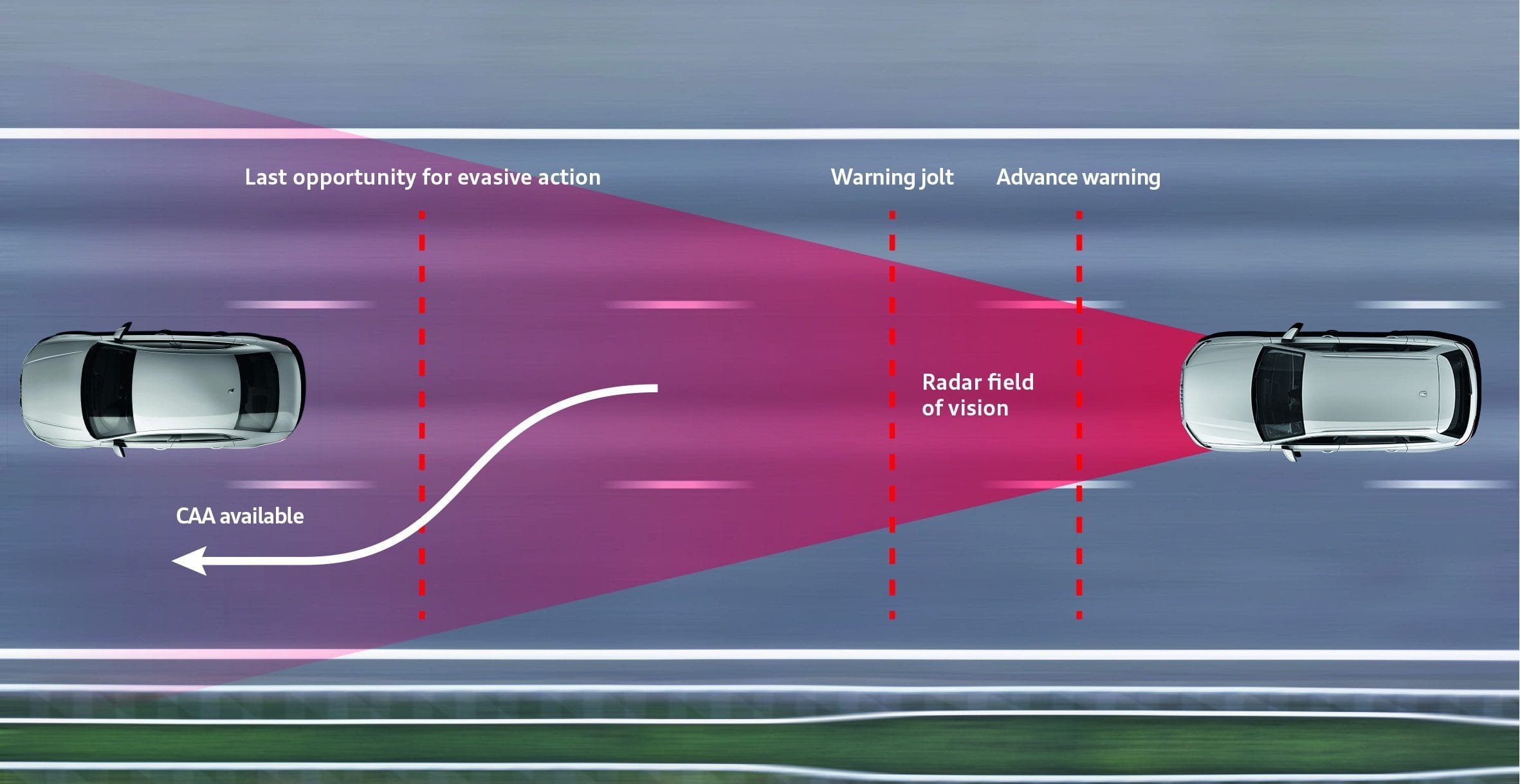Automatic emergency braking (AEB) is designed to help you avoid or reduce the severity of a collision by applying the brakes if a potential impact is detected. Understanding how it works can increase your confidence on the road.
- Know the basics – AEB uses forward-facing sensors to detect vehicles or obstacles ahead and can automatically apply brakes if you don’t respond in time.
- Understand the warnings – The system usually gives visual or audible alerts before braking; recognise these signals so you can react promptly.
- Stay attentive – AEB is a backup; you should remain focused and be ready to brake yourself.
- Keep sensors clean – Dirt or debris on sensors and cameras can prevent detection; check them regularly.
- Maintain safe distances – AEB helps in emergencies but does not replace good driving habits such as keeping a safe following distance.
- Avoid distractions – The system cannot compensate for inattention; keep your eyes on the road.
- Don’t override unnecessarily – If the system intervenes, avoid fighting it; apply firm pressure if you need more braking.
- Practice gentle stops – Avoid getting too close too quick to the vehicles in front. This will reduce unnecessary triggering of AEB.
- Follow manufacturer updates – Check for software updates that improve AEB performance.
- Remember conditions – AEB may not work well in heavy rain, snow or on rough roads; adjust your driving accordingly.
Automatic emergency braking can be a lifesaver when used correctly. Learn how your system works and always remain in control. For more plain-English guides and FAQs, visit our Driver’s Lounge.

Hiran Alwis is an automotive lecturer and ADAS specialist with over 15 years of experience in diagnostics, advanced safety systems, and technical training. He founded ADAS Project to help everyday drivers and workshop technicians understand and safely use advanced driver assistance systems.


1 thought on “Automatic Emergency Braking: What You Need to Know”